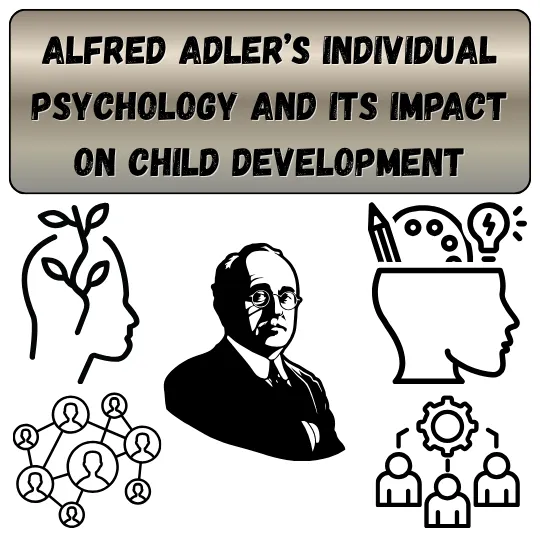The Impact of Bereavement on Children and Adolescents
Grief is hard at any age. But when it happens in childhood or adolescence, right in the middle of learning who you are and how the world work, it can feel especially overwhelming. The death of a parent, sibling, grandparent, or even a beloved pet can shake a child’s sense of security and change everything they thought they understood.
This guide is here to help you understand how young people experience grief, how it can show up at different ages, and what you can do to support them. With empathy, honesty, and steady presence, we can help children and teenagers find their way through the storm.
Childhood Grief: What Makes It Different?
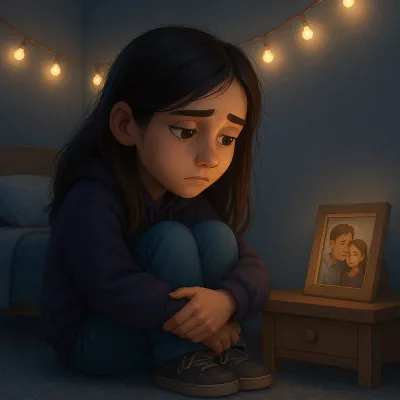
What Bereavement Means for Young People
For children and teens, bereavement isn’t just about missing someone. It’s about adjusting to a life without that person — someone who may have been a steady source of love, routine, or identity. Their world has changed, and now they’re trying to rebuild a sense of normal.
Grief in young people is layered and complicated. While adults may process grief through conversation or reflection, children often express it through behaviour, play, or even physical symptoms. Sometimes, they’ll talk. Sometimes, they won’t. Both are valid.
Why Grief Looks Different in Children and Teens
Grief in children is shaped by their stage of development. Little ones often see death as reversible or temporary. Older children start to understand it’s permanent, but may still carry magical thinking — wondering if their thoughts or actions somehow caused the loss. Teens grasp the finality, but they’re also dealing with identity, independence, and peer pressure, which adds layers of complexity.
Young people might grieve in bursts. One minute they’re laughing at a TV show; the next they’re in tears. This back-and-forth — sometimes called "puddle grief" — can confuse adults expecting a more consistent response. But it’s normal. It’s how many young people cope.
Common Myths About Grieving Children
It’s a myth that children “bounce back” quickly or aren’t deeply affected by loss. Just because they’re playing or going to school doesn’t mean they’re not grieving. Their brains are doing the best they can to process something huge — in small, manageable doses.
Another myth is that it’s better to shield them from the truth. But children need honesty — in words they can understand. Trust is built through openness, and age-appropriate explanations help them make sense of what’s happened (Jones, Deane and Keegan, 2015).
The Impact of Bereavement Across Developmental Stages
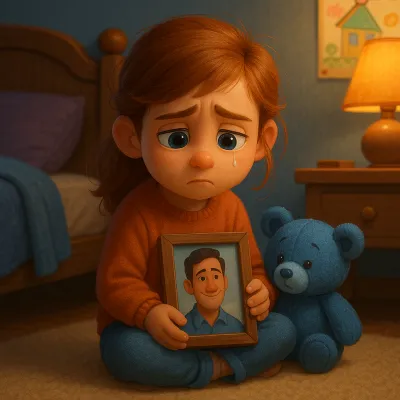
Grief Responses in Preschool Children (Ages 0-5)
At this age, children don’t fully understand what death means. They may think it’s like going to sleep or expect the person to come back. You might see them acting out what happened in play or asking the same questions again and again.
Signs of grief may include:
- Regressing in behaviour (e.g., bedwetting, clinginess)
- Trouble sleeping
- Separation anxiety
- Tantrums
Keep routines steady, offer comfort, and use clear, simple language when talking about the death.
Grief Responses in Primary School Children (Ages 6-11)
Children in this age group begin to grasp that death is final — but they might still think it’s their fault. You may see physical symptoms like stomach aches, worry about their own safety, or guilt about things they said or did.
They may:
- Withdraw or become aggressive
- Struggle at school
- Ask deep or tricky questions
- Express emotions through play or drawing
Reassurance and honest conversations help a lot at this age. Let them know they’re not to blame.
Grief Responses in Adolescents (Ages 12-18)
Teenagers understand what death means — but they’re also navigating friendships, identity, and independence. They may not want to talk about their grief or might try to protect others by hiding their feelings.
Look out for:
- Mood swings or isolation
- Risk-taking (e.g., drinking, reckless behaviour)
- Drop in school performance
- Anxiety about the future
Teens need safe adults they can trust, space to grieve in their own way, and reassurance that it’s okay to feel everything they’re feeling.
The Specific Challenges of Sibling Bereavement
Losing a brother or sister is a particular kind of heartbreak. Siblings share a home, memories, and a future — and when one dies, the other is left navigating a confusing mix of grief, guilt, loneliness, and often, invisibility.
Some children might feel pressure to “fill the gap.” Others might struggle with guilt over things left unsaid or sibling rivalry. It’s common for parents, deep in their own grief, to find it hard to support the surviving child — which can leave them feeling overlooked or alone (Li, Tendeiro and Stroebe, 2018).
Acknowledging this unique grief is vital.
How Grief Shows Up

Emotional Reactions (Sadness, Anger, Guilt, Anxiety)
Grief evokes a wide spectrum of emotional responses in children and adolescents.
Sadness is the most commonly recognised emotion, but it is often accompanied by others that can be more challenging for adults to understand or manage.
Anger might be directed at the deceased, themselves, others perceived as responsible, or the unfairness of the situation.
Guilt is frequently present, especially if the child feels they could have prevented the death or if they had negative feelings towards the person who died.
Anxiety about their own safety, the safety of other loved ones, or the future is also common.
These emotions can fluctuate rapidly and intensely, reflecting the non-linear nature of childhood grief.
Behavioural Changes (Withdrawal, Acting Out, Sleep/Eating Disturbances)
Observable changes in behaviour are significant indicators of grief in young people.
Some may become withdrawn and quiet, avoiding social interaction and activities they once enjoyed. Others may act out, becoming defiant, aggressive, or engaging in risky behaviours as a way to express their pain or feel a sense of control.
Sleep disturbances, such as difficulty falling asleep, nightmares, or early waking, are common physical manifestations of stress and anxiety related to loss.
Changes in appetite, leading to weight loss or gain, can also occur (Hopf et al., 2020).
These behavioural shifts are often attempts to cope with overwhelming feelings and a disrupted sense of security.
Cognitive Impacts (Concentration Issues, School Performance)
Grief can significantly impact a child's cognitive functioning. Difficulty concentrating, paying attention, and remembering things are frequent complaints.
Their minds may be preoccupied with thoughts of the deceased, the circumstances of the death, or anxieties about the future. This can lead to a decline in academic performance and difficulties at school (Sandler et al., 2010; Matthews, Quinlan and Bohle, 2019).
Younger children might struggle with problem-solving, while older children and adolescents may find complex tasks challenging.
Supporting their cognitive needs often requires patience, understanding from educators, and potential adjustments to their school routine or workload.
Physical Symptoms Related to Grief
Grief can manifest physically in children and adolescents, similar to how stress impacts the body.
Common physical symptoms include headaches, stomach aches, fatigue, muscle tension, and changes in appetite or sleep patterns already mentioned. Some children may experience a lowered immune response, making them more susceptible to illness.
These physical complaints are real and should not be dismissed; they are often the body's way of expressing emotional pain when verbal expression is difficult or not yet developed.
A medical check-up can rule out other causes, but it is important to recognise the potential link between these symptoms and the grieving process.
What Happens If Grief Goes Unsupported?
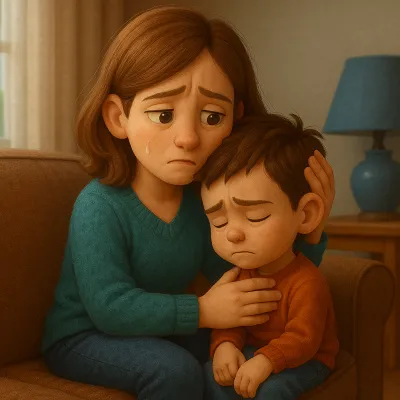
Increased Risk of Mental Health Conditions (Depression, Anxiety, Trauma)
While many young people navigate grief with the support of their networks, untreated or unsupported grief significantly increases the risk of developing long-term mental health conditions.
These can include depression, anxiety disorders, and trauma-related symptoms, especially if the death was sudden, violent, or perceived as traumatic (NERIA and LITZ, 2004; Kristensen, Dyregrov and Gjestad, 2020; Matthews, Quinlan and Bohle, 2019).
A subset of children and adolescents may experience prolonged or complicated grief, characterised by persistent, intense yearning, sorrow, and difficulty accepting the loss, which significantly impairs functioning (Shear et al., 2011; Maciejewski et al., 2016; Melhem, 2011; Djelantik et al., 2017).
Previous adverse childhood experiences (ACEs) can also compound the impact of bereavement (Guidetti et al., 2023). Identifying these risks and providing timely intervention is crucial.
Academic Difficulties and Educational Attainment
The cognitive and emotional burden of grief can lead to sustained academic difficulties.
Concentration problems, memory issues, and reduced motivation can affect school performance over months or even years (Melhem, 2011). If these issues are not addressed, they can impact educational attainment and future opportunities.
Schools play a vital role in supporting bereaved students by offering understanding, flexibility, and access to counselling or learning support.
Open communication between families and schools is essential to create a supportive educational environment.
Impact on Social Development and Relationships
Bereavement can disrupt a young person's social development and relationships. They may withdraw from friends, struggle to connect with peers who haven't experienced loss, or find it difficult to trust others. Some may feel different or misunderstood, leading to isolation.
Family relationships are also affected, as the family system adjusts to the loss. Communication patterns may change, and surviving members, including children, might take on new roles or responsibilities.
Supporting social connections and helping young people articulate their experiences to others can mitigate feelings of isolation.
Building Resilience and Post-Traumatic Growth
While grief presents significant challenges, it is also important to recognise the potential for resilience and even post-traumatic growth. With appropriate support, young people can develop coping strategies, a deeper understanding of themselves and others, and a greater appreciation for life.
Resilience is a multifaceted construct, influenced by individual factors, social resources, and family cohesion (Archdall and Kilderry, 2016; Vegsund et al., 2019).
Fostering a supportive environment helps young people navigate their grief, build inner strength, and adapt to their changed circumstances, ultimately learning to live with their loss (Jones, Deane and Keegan, 2015).
Helping Children Heal
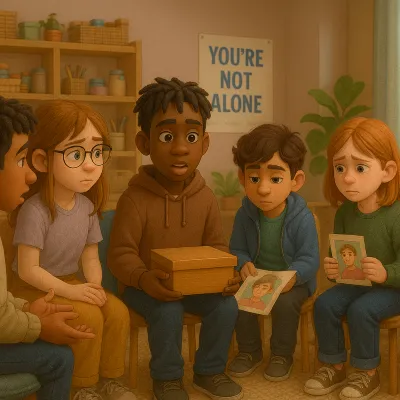
Creating a Safe and Open Environment for Expression
The cornerstone of supporting a bereaved child or adolescent is creating a safe and predictable environment where they feel secure enough to express their feelings without fear of judgment or overwhelming others.
This involves being present, patient, and available to listen when they are ready to talk. Avoid forcing conversation, but let them know you are there.
Validate their feelings, whatever they may be – sadness, anger, confusion, or even moments of happiness. Allowing them to see adults expressing their own grief healthily can also normalise their experience.
Effective Communication: Honesty and Age-Appropriateness
Open and honest communication is vital, tailored to the child's developmental level.
Use clear, simple language when explaining the death, avoiding euphemisms like "gone to sleep" which can be confusing or frightening. Answer their questions truthfully, even difficult ones, using age-appropriate terms (Jones, Deane and Keegan, 2015).
Check for understanding and be prepared to repeat explanations as their comprehension evolves.
It is okay not to have all the answers; admitting uncertainty while offering reassurance is better than fabricating explanations.
Maintaining Routine and Structure
In the aftermath of a loss, a child's world can feel chaotic and unpredictable. Maintaining familiar routines provides a sense of stability and security. Stick to regular mealtimes, bedtimes, and school schedules as much as possible.
While some flexibility may be necessary, predictable structure helps ground them during a turbulent time. It signals that despite the immense change, life continues, and they are still cared for within established boundaries.
Encouraging Remembering and Memorialisation
Helping children keep the memory of the deceased alive is an important part of the grieving process.
This can involve looking at photographs, sharing stories, creating memory boxes, or engaging in activities the person enjoyed. Memorialisation can take many forms, such as planting a tree, lighting a candle on special dates, or creating artwork or writing about the person.
These activities acknowledge the significance of the relationship and help integrate the loss into their ongoing lives, maintaining a sense of connection (Davies, 2020).
Utilising Play, Art, and Other Non-Verbal Communication
Young children often express their deepest feelings through play and creativity rather than words.
Providing opportunities for drawing, painting, playing with dolls or figures, or engaging in sand tray therapy can offer valuable insights into their internal world and allow them to process emotions symbolically.
Adolescents might find writing, music, or other creative outlets helpful. These non-verbal methods provide alternative pathways for expression, especially when talking feels too difficult or abstract.
Supporting the Supporting Adults: Self-Care for Caregivers
Supporting a bereaved child is emotionally demanding, and caregivers need support too.
Adults who are grieving while also caring for grieving children face a double burden (Roleston, West and Shaw, 2019). Prioritising self-care is not selfish; it is essential for the caregiver's well-being and their capacity to provide effective support.
This includes seeking their own grief support, maintaining their own routines, leaning on their support network, and allowing themselves time to rest and process their own loss.
Support for caregivers is recognised as a crucial pillar in frameworks for children's bereavement care (Jones, Deane and Keegan, 2015).
Recognising When Professional Help is Necessary
Identifying Signs of Complicated Grief or Mental Health Concerns
While grief is a normal process, certain signs suggest that a child or adolescent may need professional intervention. These signs include persistent, intense symptoms that do not lessen over time or worsen (Melhem, 2011; Djelantik et al., 2017).
Look for significant and prolonged withdrawal, severe difficulty functioning at school or with peers, persistent physical complaints, recurrent thoughts of death or suicide, excessive guilt or self-blame, or engaging in dangerous risk-taking behaviours.
These can indicate complicated grief, depression, anxiety disorders, or trauma that requires specialist assessment (Matthews, Quinlan and Bohle, 2019).
Types of Professional Support Available (Counselling, Therapy, Support Groups)
Various forms of professional support are available for bereaved young people.
Individual counselling or therapy provides a safe space to talk about feelings and develop coping strategies. Different therapeutic approaches may be used, such as cognitive behavioural therapy (CBT) or Eye Movement Desensitisation and Reprocessing (EMDR), particularly if trauma is involved or emotional regulation is challenging (Guidetti et al., 2023).
Family therapy can help improve communication and support within the family unit (Weber et al., 2019; Sandler et al., 2010).
Bereavement support groups, specifically designed for young people, allow them to connect with peers who understand their experience (Linde et al., 2017).
How to Access Professional Help (School, GP, Charities)
In the UK, there are several pathways to accessing professional help for bereaved children and adolescents.
Schools often have pastoral care teams or school counsellors who can provide initial support and guidance or refer to external services.
A General Practitioner (GP) is another key point of contact; they can assess the child's overall health, discuss concerns with parents, and make referrals to child and adolescent mental health services (CAMHS) or other specialist bereavement services.
Numerous national and local charities specialise in providing bereavement support for young people, offering counselling, group work, and resources for families.
These organisations can be found through online searches or recommendations from schools or GPs.
The Benefits of Peer Support for Bereaved Young People
Connecting with other young people who have experienced loss can be incredibly validating and healing. Peer support groups offer a space where bereaved children and adolescents feel less alone and more understood.
Sharing experiences, feelings, and coping strategies with peers who 'get it' can reduce isolation and build confidence. It provides an opportunity to normalise their complex emotions and behaviours and learn from others navigating similar challenges.
Many bereavement charities offer age-specific peer support programmes, recognising their unique value in the healing process (Leech and Archer, 2016).
Conclusion: Fostering Healing and Adaptation
Bereavement is a challenging but, for most, a navigable experience in childhood and adolescence.
While the pain of loss is real and should not be minimised, young people possess a remarkable capacity for adaptation and growth. Providing consistent, compassionate, and age-appropriate support is fundamental to fostering their healing journey.
This involves creating safe spaces for expression, communicating honestly, maintaining structure, honouring memories, and utilising non-verbal communication methods.
Recognising when professional help is needed and knowing how to access it ensures that those who struggle receive the specialist support required.
By understanding the unique landscape of childhood grief and actively supporting bereaved young people, families, schools, and communities can help them integrate their loss, build resilience, and move towards a future where they can live fully while cherishing the memory of those they have lost.
